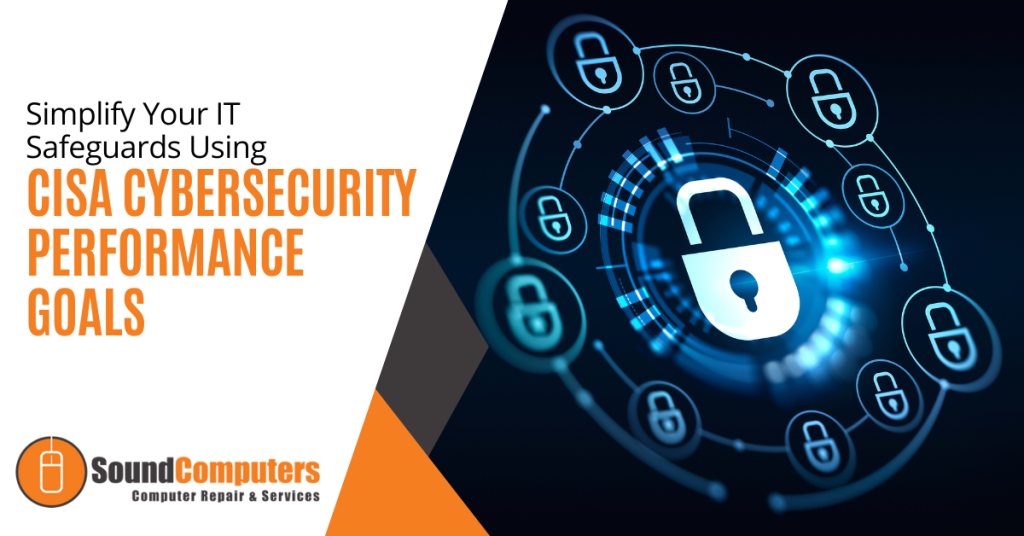
Cybersecurity is becoming increasingly important as technology plays a more prominent role in our daily business operations in both small and large corporations. This increase in technology comes with an increased threat of cyberattacks. According to the U.S. Small Business Administration, over 700 thousand cyberattacks against small businesses resulted in damages totaling 2.8 billion in 2020. Companies must implement IT safeguards to protect themselves from the recurrent increase in these attacks.
However, the process of IT security can be overwhelming, with endless options of technicalities. To ensure more efficient protections, simplifying your IT safeguards becomes essential. This is why the Cybersecurity and Infrastructure Security Agency (CISA) came in to help organizations ease and improve their IT defense and manage system vulnerabilities by providing guidance on best practices and performance goals for cybersecurity.
The CISA is a federal agency within the Department of Homeland Security responsible for protecting the nation’s critical infrastructure from cyber threats.
The Cybersecurity Performance Goals (CGPs) provided by the agency set a framework for organizations to simplify and strengthen their IT safeguards which helped them understand and prioritize the most critical aspects of cybersecurity and ensure adequate systems and data protection.
In this article, we will explore the CISA Cybersecurity Performance Goals and the processes of its framework that help to ease and strengthen IT security.
What Are the CISA Cybersecurity Performance Goals?
The CISA Cybersecurity performance goals are guidelines to help organizations improve their security system. The goals were spelled out in response to President Biden’s national security memorandum on enhancing cybersecurity for critical infrastructure systems.
The guidelines provide a clear and concise roadmap for securing an organization’s critical infrastructure which takes the complexity out of protecting assets. The goals do not comprehensively capture the general security practices but focus on the core cybersecurity guides that are effective in risk reduction and can be applied across all sectors.
By following CISA’s Cybersecurity Performance Goals, you will be able to secure your systems and make it difficult for cyber attackers to manipulate your system successfully.
The goals address eight detailed topics including the following:
- Account Security
- Device Security
- Data Security
- Governance and Training
- Vulnerability Management
- Supply Chain/Third Party
- Response and Recovery
- Others (detecting relevant threats, network segmentation, TTP, email security, etc.)
The goal comprises the risk addressed, security practice, recommended actions, scope and desired outcomes under each topic.
One significant benefit of the CISA Cybersecurity Performance Goals is that they are created specifically for Small and Medium Enterprises (SMEs) with limited resources which allows them to modify cybersecurity measures according to their operations’ complexity and scale.
Simplifying Overall IT Security Using Cybersecurity Performance Goals
The Cybersecurity Performance Goals are divided into four categories to take out the complexities of cybersecurity and each represents different stages in the cybersecurity process. Organizations will simplify and improve their IT security measures by concentrating on these four categories.
They can ensure they successfully protect their systems and data from cyberattacks and efficiently recover in case of an attack. The four categories include Identify, Protect, Detect and Respond.
- Identify
This refers to recognizing and understanding your organization’s assets, risks and vulnerabilities. It includes identifying the most vital systems in your organization and understanding the potential threats and vulnerabilities that could be used to attack those systems.
Organizations can focus on protecting essential systems and data by identifying the assets and risks and prioritizing their cybersecurity efforts.
- Protect
This is about employing safeguards to prevent attacks from happening. It includes things like implementing firewalls, intrusion detection and prevention systems and encryption to guard sensitive data.
It also about training employees on cybersecurity best practices (such as creating strong passwords and detecting phishing emails). Organizations can reduce the risk of a successful attack by implementing these safety measures.
- Detect
This refers to detecting and responding to cyber incidents. It includes implementing security monitoring and incident response plans so that organizations can quickly detect and respond to potential attacks.
It also includes regular security testing like penetration testing and vulnerability assessments to identify weaknesses in the organization’s defenses. By detecting and responding to incidents quickly, organizations can minimize the damage caused by a cyberattack.
- Respond
This refers to taking actions to manage and recover from cyberattacks. The process includes conducting forensic investigations, implementing incident response plans and communicating with law enforcement and other stakeholders.
It also includes implementing measures (like patches and updates) to prevent future incidents and new security controls to prevent similar attacks.
Are You Ready to Simply & Improve Your Cybersecurity?
Sound Computers has experts with over twenty years of combined technology experience who will guide you through. We can help you adopt the CISA Cybersecurity Performance goals to simplify and strengthen your IT security.
Contact us to schedule a free consultation. You can call 860-577-8060 or reach us online.
